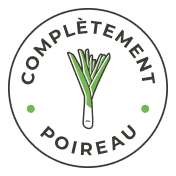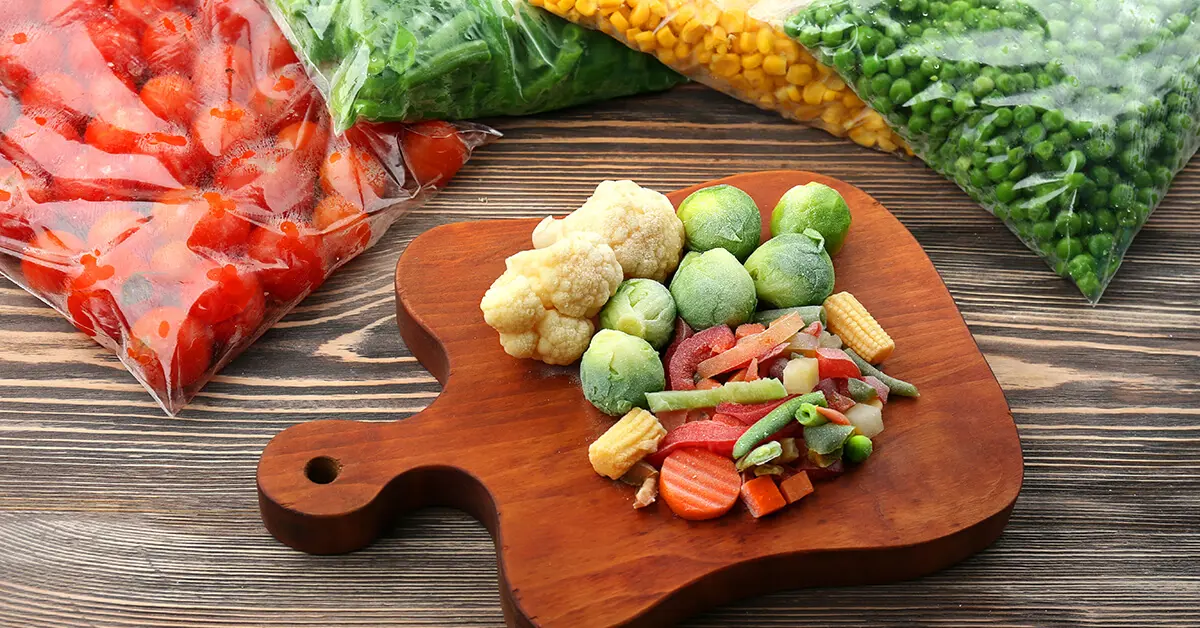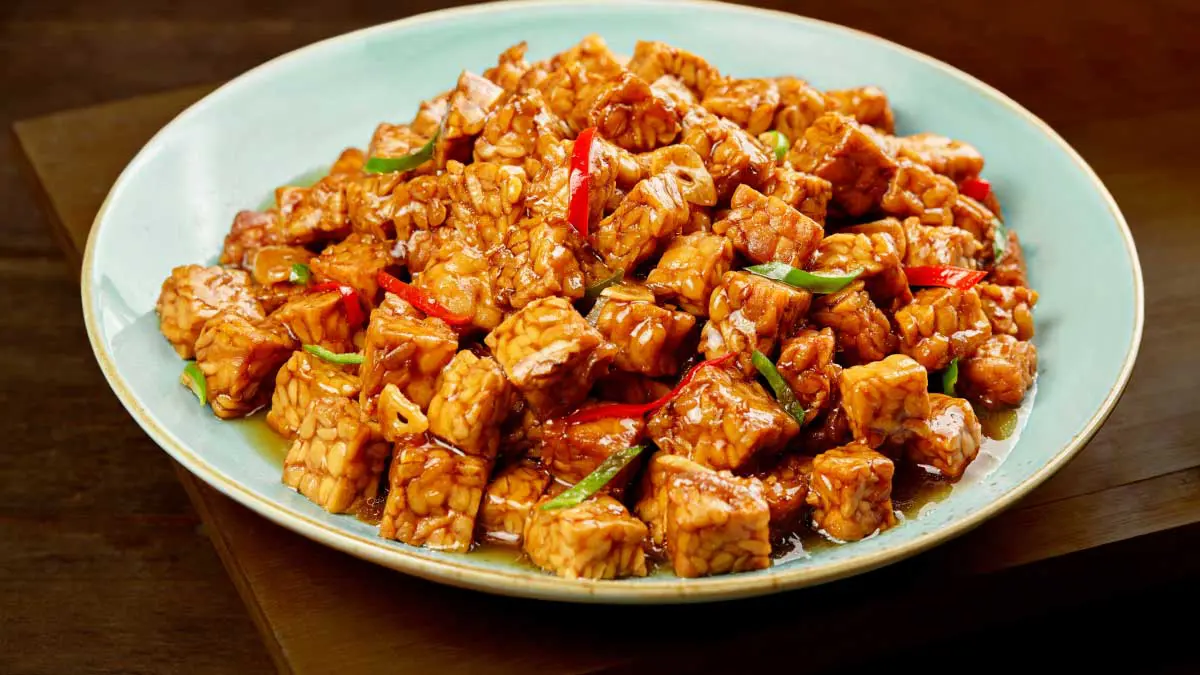Once you’ve stocked up on local fruits and vegetables from your garden, from local growers or pick‑your‑own harvests during the bountiful season, there’s nothing better than freezing your fruits and vegetables to eat local year round! In addition to enjoying local produce during the cold season, freezing your fruits and vegetables preserves their flavours, vitamins and nutrients. In this article, discover a step‑by‑step guide on how to freeze your fruit, how to freeze your vegetables and how to blanch your vegetables.
Freezing strawberries, raspberries and blueberries, freezing leeks, broccolis, cauliflowers and more… it’s all here! You’ll see, it’s all so simple, and you can enhance your winter recipes with well‑preserved Quebec produce 😊.
Washing and drying fruits and vegetables before freezing
Before freezing fruits or freezing vegetables, a good wash is essential. To prevent frost from forming on your fruits and vegetables during freezing, wipe them dry to remove all traces of water.
To freeze leeks, you should also start by making an incision along their length before running them underwater to remove any soil or sand between the leaves and clean them. Like other vegetables, leeks must be thoroughly dried before they are cut and frozen.

Cutting and preparing fruit and vegetable portions for freezing
Cubes, slices, strips, bunches — whatever shape and size you decide! Your fruits or vegetables will be ready to use as soon as they come out of the freezer. Pick in advance how you want to use your frozen fruits and vegetables and cut them to the right size. You can then portion out your frozen fruits and veggies to only use the quantity needed for your recipes from the freezer.
Once clean and dry, place berries on a parchment‑lined baking sheet. After about 1 hour in the freezer, they’ll be hard, and you’ll be able to transfer them to airtight bags or containers without them sticking together. This will avoid having large, compact blocks of berries in the freezer. Before closing the bags, remove as much air as possible to reduce the frosting risks on the fruits.
Frozen fruit cubes are perfect for making pies or smoothies, and frozen vegetables are a time‑saving convenience for stir‑fries, stews, or a wide variety of home‑cooked meals.
And if you ever run out of leeks for one of your recipes, run to the supermarket for our sliced leeks packages, available year‑round 😊.

Blanching vegetables before freezing
Many vegetables need to be blanched before freezing. Blanching vegetables involves plunging them into boiling water for a few minutes and then into cold water (even ice‑cold water) to halt the cooking process. Blanching will preserve their crispness and beautiful colours.
You can even take advantage of Quebec’s corn season to shell and freeze corn for your next shepherd’s pie with leeks instead of using grocery store cans. Simply boil your cobs for a little less than usual, then plunge them into cold water. Place the corn upright on a cutting board, holding it firmly. Run a knife along its length to loosen the kernels. You’ll have some great Quebec corn kernels ready to freeze 🌽!
Depending on the vegetables, blanching time may vary slightly:
| 2 minutes | 3‑4 minutes |
| Cabbage (in quarters) | Eggplants |
| Spinach | Asparagus |
| Green peas | Broccoli (in small florets) |
| Carrots (in slices) | |
| Cauliflower (in small florets) | |
| Brussels sprouts (as a whole or in halves) |
Tomatoes are also great to blanch. After boiling them, plunge them into iced water, and their skins will come off like a charm. You can then seed and crush them for a beautiful homemade tomato coulis ready to be used as a base for a good spaghetti sauce!

Grilling vegetables before freezing them
Grill your vegetables on the BBQ before freezing them in airtight bags or containers to give your recipes an extra kick.
There’s no need to blanch eggplant before grilling it; simply drain off the water. Slice the eggplant thickly and sprinkle coarse salt over it. After 15 or 30 minutes, remove the salt and water from the slices and grill them on the BBQ.
There’s no need to blanch peppers or zucchini, either. But a little time on the grill before freezing can make a big difference in your recipes!

Stocking up on chopped garlic, pesto and candied tomatoes
Fall is also the perfect time to take advantage of the latest harvests and stock up on condiments. Plenty of foods are easy to make before freezing to save time later on.
Among these is garlic. Although it can be stored for a long time in cloves, there’s nothing better than saving time by having it handy to garnish your dishes. Chop up garlic cloves in a food processor, then freeze the chopped garlic in ice cube trays for a few hours. Once frozen, transfer your garlic cubes into an airtight bag or container. The same can be done with fresh ginger! This way, there’s no need to chop garlic or ginger for every new recipe you make 😊.
You can also prepare a large quantity of pesto in a food processor and freeze it in small, ready‑to‑use portions. Homemade pesto is so good and perfect for pasta dishes, like tomato, leek and pesto pie or chicken and leek skewers with pesto and croutons 🤤.
Also, consider making candied tomatoes or cherry tomatoes (recipe in French) that you can freeze in portions. Frozen candied tomatoes are exquisite on a pizza or in pasta dishes!
Tips for freezing fruits and vegetables
Maximizing freezer space
There’s nothing like a tidy freezer to store more local fruits and vegetables over the winter. Use clear glass jars (such as Mason jars), freezer bags, or clear airtight freezer dishes to organize your frozen fruits and vegetables to maximize available space.
For freezer bags, we suggest freezing them flat to maximize storage. This not only saves space but also leaves more room for your favourite ice cream 🍨.

Identifying containers and resealable bags
Write the date, contents and number of servings with a marker on each bag or a label for glass jars or airtight containers. Gather the same fruits or vegetables in the same place in the freezer. This way, you can prioritize the older ones and keep a good inventory of what you have before needlessly going to the grocery store.

Vegetables not to freeze
Some vegetables hate the freezer. But to our delight, there are very few of them.
Salad
Even if it seems possible, don’t do it. Once defrosted, it won’t have the shape it once had. Cooked salad is not a very popular dish!
Cucumbers
Cucumbers are waterlogged. Once unfrozen, they’ll have none of their crunch and texture.
Potatoes and radishes
Like cucumbers, the crunchiness of these vegetables disappears when they defrost.
Enjoying frozen fruits and vegetables in our recipes
Now that you have a good supply of frozen fruits and vegetables, you’re ready to cook plenty of recipes year‑round with your frozen supplies! It’ll even save you a trip to the frozen aisle at the grocery store in the middle of winter since you’ll have all the frozen fruits and veggies you need on hand at home 😉.
Bon appétit !




